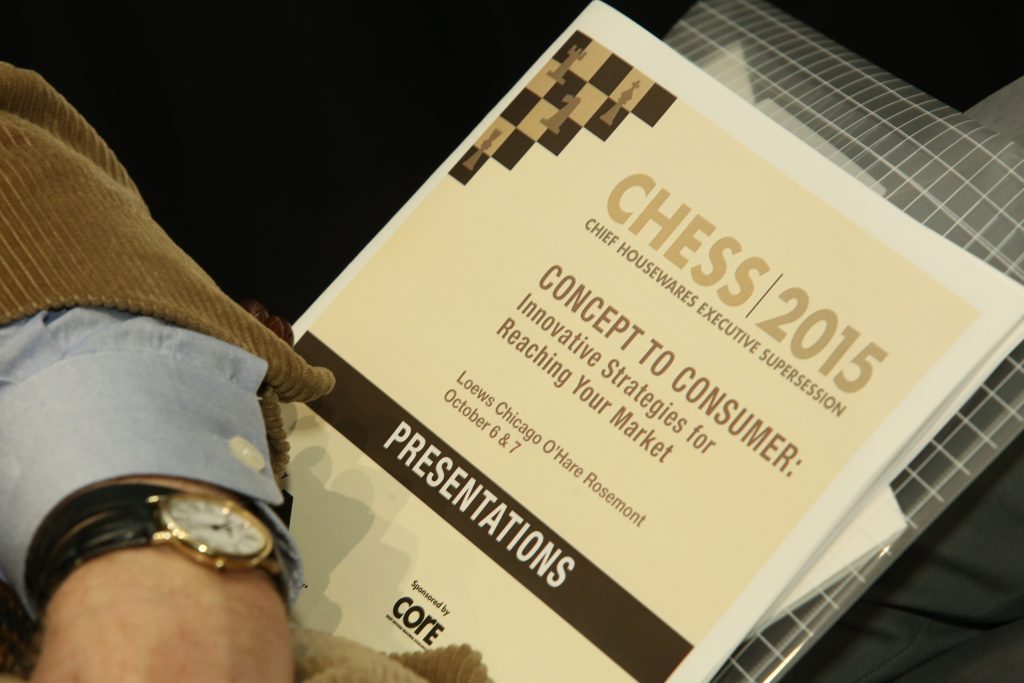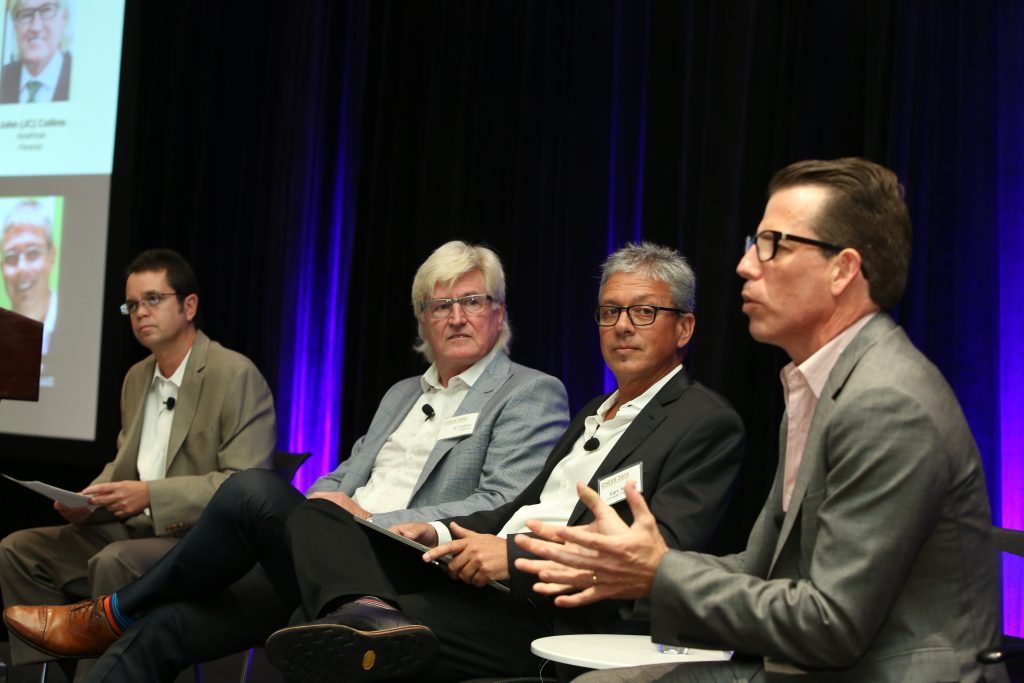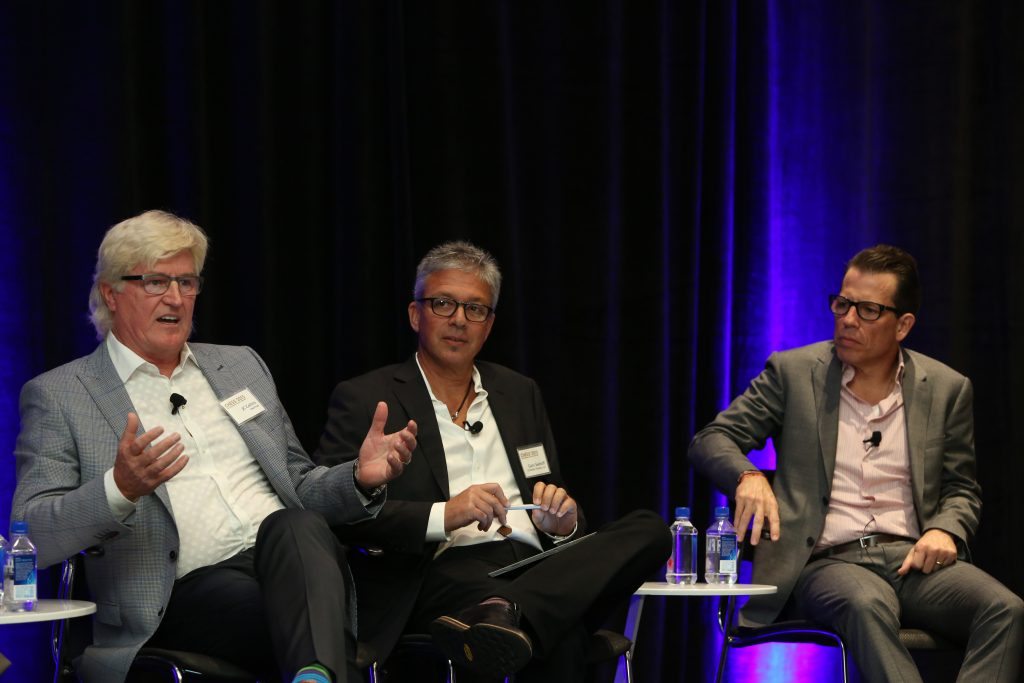Chief housewares executives eager to hear the latest from the front lines of the industry learned from experts who addressed IHA’s 2015 CHESS conference on October 6 and 7. The two-day conference, held at the Loews Chicago O’Hare hotel, attracts top executives at IHA-member companies who look forward to the varied and fast-paced program. Seven presentations and panel discussions presented the state of the practice and offered high-level insights into innovation, design, crowdfunding, branding, the future of retail, supply chain challenges and events in China. This engaging and invigorating conference joins veteran and first-time participants who value building relationships that help build their businesses. This year’s CHESS enjoyed the largest number of participants in its 10-year + history.

Here are highlights from the session:
Housewares Hot Seat—Lessons Learned Along the Innovation Continuum
The conference began with a frank conversation among three chief executives about how different housewares companies define and implement innovation across all aspects of their business—product development, marketing and management. Peter Giannetti, Editor-in-Chief, HomeWorld Business, moderator, noted that panelists John (JC) Collins, president, Global Marketing and Sales, Neatfreak; Alejandro Peña, president USA, Jarden Consumer Solutions; and Gary Seehoff, director and founder, Evriholder, represented international experience—with South African Seehoff, Canadian Collins and South American Peña as well as perspectives from small to publicly held companies.
Giannetti’s initial question set the program’s pace: Innovation is not just an idea that leads to a product. As company leaders, how do you create a culture of innovation and then manage the costs of confronting challenges to innovation? How do you create innovative strategies and manage things beyond the product? How do you define innovation?
“Innovation creates value, it’s not just a big idea, but adds value to a product and generates revenue,” said Collins. “It’s not just a product, it could also be process.”

At Evriholder, innovation means design and execution of a totally new product that solves a specific solution in a simple way, said Seehoff.
Because Jarden is a large corporation, Peña said they use innovation strategically. “We ask ourselves three questions: What is the consumer need? Is there a technology to enable that product to be executed? Not every good idea can be done. Will this great idea that be executed with technology to meet the market and make a profit?,” he said.
Protecting their innovation comes from a mix of patents, trademarks and getting to market first. “In the first to file environment, it’s tough. Ultimately the barrier to entry is distribution. The first to market pressure means you have to penetrate with important retailers,” Seehoff said.
Building an innovative organization and managing the culture top to bottom requires a balancing act, the panel said.
“Finding the right talent is critical,” Peña explained. “We look for key characteristics: a visionary who is consumer-centric and understands the value of discipline and execution. Innovation is about discipline and creativity. You need both.”
Seehoff agreed saying, “It’s a fine balance between discipline and stifling or encouraging innovation and creativity. Creatives often don’t conform to the norm—schedules, budgets—and they need a lot of feedback.”

When a new employee begins at Neatfreak, no matter what the position, one of the three partners will meet with the person, Collins said.
“It’s so important that they understand culture of company as the jumping off point,” he said. “Neatfreak is a company of 55 people, so the CEO is on the front lines. It’s important for employees to understand the dynamics and the layers beneath. In a company this size, most of us are close to the action, and employees in all aspects of the operation meet with senior management weekly.”
New ideas blossom from anywhere—consumers, magazines, thinking in the shower. Seehoff’s team works with the inventor community to gather to new ideas and Collins’s group gains insights from observing garment care behaviors in family homes. Pena’s team uses the Internet for real-time information from consumers….”
“We see their sentiment and can understand what made that product successful,” Peña said.
CHESS 2015 was sponsored by the following companies:
Brandwise www.brandwise.com
Design Research www.designres.com
E-Power Marketing www.epower.com
Experticity www.experticity.com
International Housewares Shippers Association www.housewares.org/iha/global/ihsa.aspx
Marketstar www.marketstar.com
NSF www.nsf.org



